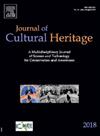Archaeometric investigations of Sasanian silver drachmas (6th-7th century AD) using X-ray fluorescence analysis
IF 3.5
2区 综合性期刊
0 ARCHAEOLOGY
引用次数: 0
Abstract
X-Ray Fluorescence (XRF) analysis is widely employed in the field of cultural heritage due to its non-destructive nature. µ-EDXRF was used to study 29 Sasanian drachmas from a private collection at the Department of Humanities, University of Trieste. The coins were issued between 499 and 628 AD, during the reigns of four Sasanian kings (Kawad I, Khosrow I, Hormizd IV, and Khosrow II). This study aimed to determine the elemental composition of the alloy's surface, assess the coins’ fineness, and identify potential forgeries or signs of devaluation. Eight XRF spectra were acquired for each sample, revealing a primary composition of Ag, with traces of Cu, Au, and Pb. Semi-quantitative analysis showed Ag content exceeding 95% in nearly all coins, with two suspected forgeries identified (coin no. 13 minted during the reign of Hormizd IV and coin no. 18 from the reign of Khosrow II). Five drachmas from Khosrow II's reign, marked with the inscription “afid”, exhibited Ag content above 99 %, supporting the historical hypothesis of superior quality compared to other drachmas from the same period. Finally, the %Au and the presence of Pb provided further indications on the origin of Ag, allowing hypotheses on the mineral sources.
利用 X 射线荧光分析法对萨珊银德拉克马(公元 6-7 世纪)进行考古调查
X 射线荧光 (XRF) 分析因其非破坏性而被广泛应用于文化遗产领域。µ-EDXRF 被用于研究的里雅斯特大学人文科学系私人收藏的 29 枚萨珊古币。这些钱币发行于公元 499 年至 628 年期间,由四位萨珊国王(卡瓦德一世、科斯罗一世、霍尔米兹德四世和科斯罗二世)统治。这项研究旨在确定合金表面的元素组成,评估钱币的成色,并识别潜在的伪造品或贬值迹象。每个样本都获得了 8 个 XRF 光谱,显示主要成分为银,还有微量的铜、金和铅。半定量分析显示,几乎所有钱币的银含量都超过了 95%,其中发现了两枚疑似赝品(霍尔米兹德四世统治时期铸造的第 13 号钱币和霍斯洛二世统治时期铸造的第 18 号钱币)。霍斯洛二世统治时期的五枚德拉克马上标有 "afid "字样,其Ag含量超过99%,支持了与同一时期其他德拉克马相比质量更优的历史假设。最后,Au%和 Pb 的存在进一步说明了 Ag 的来源,从而可以对矿物来源进行假设。
本文章由计算机程序翻译,如有差异,请以英文原文为准。
求助全文
约1分钟内获得全文
求助全文
来源期刊

Journal of Cultural Heritage
综合性期刊-材料科学:综合
CiteScore
6.80
自引率
9.70%
发文量
166
审稿时长
52 days
期刊介绍:
The Journal of Cultural Heritage publishes original papers which comprise previously unpublished data and present innovative methods concerning all aspects of science and technology of cultural heritage as well as interpretation and theoretical issues related to preservation.
 求助内容:
求助内容: 应助结果提醒方式:
应助结果提醒方式:


